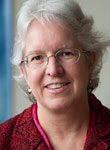Class of 2017 reflects increases in diversity
By Daniel Aloi

As Cornell approaches its sesquicentennial in 2015, the incoming Class of 2017 reflects the variety of students envisioned by founder Ezra Cornell’s ideal of “any person … any study” as well as continuing universitywide efforts to foster diversity.
The 3,282 freshmen coming to campus hail from 48 states (excepting Arkansas and Wyoming), the District of Columbia and Puerto Rico; and from 51 countries. Last year, 3,270 freshmen came from 47 states and 46 countries.
The total enrollment in the freshman class this fall is the third-highest ever, after 2011 (3,356) and 1993 (3,286).
Several significant gains were made in diversity this year. This class boasts the highest recorded number of freshman students of color (1,340), black/African-American students (231) and those who are international citizens (371).
Asian-American students are 16.5 percent of the class and Hispanic/Latino students 12.1 percent. International students make up 11.3 percent of the class, compared with 9.8 percent (319) in 2012.
Students identifying as black or African-American are 7 percent of the class, compared with 5.8 percent (190 students) entering in 2012.
The 1,340 students of color comprise 40.8 percent of the entire freshman class, following increases in recent years: 1,301 students, or 39.8 percent of freshmen entering Cornell, in 2012; and 36.4 percent in 2011.
The number of biracial, multiracial and non-Hispanic underrepresented minority (URM) first-year students increased from 73 (2.2 percent of the class) to 80 (2.4 percent).
“We are delighted to have such a diverse and accomplished group of students joining us this year,” said Vice Provost Barbara Knuth, who oversees undergraduate enrollment.
The university received its highest-ever number of applications for admission in 2013 – 39,999, a 5.8 percent percent increase over 2012, when there were 37,808 applicants.
Admissions at Cornell continues to become more selective, and the admit rate this year is the lowest in history – offers were made to 15.6 percent of applicants, compared with 16.6 percent in 2012 and 18 percent in 2011. A total of 6,222 freshmen were admitted this year; 6,259 were admitted in 2012. The yield of enrollment from admitted students also increased slightly, from 52.2 percent to 52.7 percent.
“The increases in both number of applications and yield are notable, signaling that applicants and admitted students see the value of a Cornell education,” Knuth said.
From within the United States, 30.2 percent of incoming freshmen are from New York state, 19.1 percent from Mid-Atlantic states and 12.2 percent from far West states.
The freshman class is 50.8 percent female (1,667 students), after a record-setting 52.7 percent female majority last year (1,723 students).
Nearly half (49.1 percent) of incoming freshmen qualified for need-based financial aid; the average need-based Cornell grant award per student is $33,789.
The incoming group of transfer students is more diverse than last year’s as well.
Among the 561 new transfers to Cornell this fall, 13.9 percent (78 students) are international (compared with 12.8 percent in 2012, which also had 561 transfers). By race and ethnicity, 27.3 percent (153 students) of transfers are students of color (22.8 percent in 2012).
For current and historic Cornell enrollment data, see the University Factbook.
Media Contact
Get Cornell news delivered right to your inbox.
Subscribe